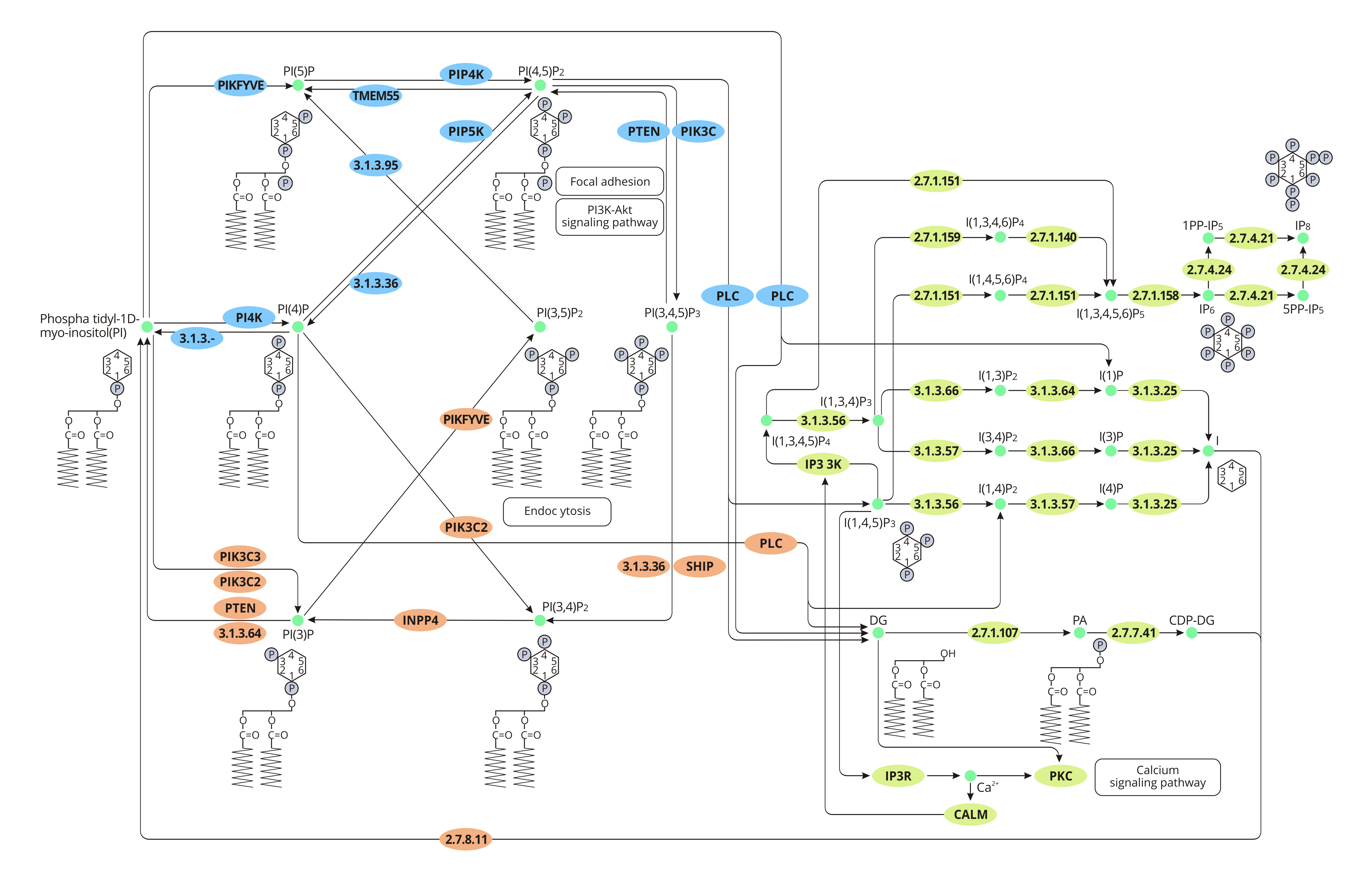
What Is the Phosphatidylinositol Signaling System?
In the phosphatidylinositol signaling pathway, activated phospholipase C (PLC) by the binding extracellular signal molecule to the receptor on the cell surface catalyzes the hydrolysis of phosphatidylinositol-(4,5)-bisphosphate (PIP2) into two secondary messengers IP3 (inositol triphosphate) and (diacylglycerol) DAG, which both convert extracellular signal into intracellular signal. The signal conduction system is the phosphatidylinositol signaling system. It is also called the double messenger system.
The Function of the Phosphatidylinositol Signaling System
The phosphorylation of phosphatidylinositol by lipid kinases leads to the production of phosphoinositides such as PI3P, PI(4,5)P2, and PI(3,4,5)P3, etc. The phosphoinositides are involved in many signaling pathways such as the PI3K-Akt pathway that mediates cell proliferation, survival, and metabolism. In addition, phosphoinositide signaling also mediates many cell activities like cell migration, endocytosis, membrane dynamics, etc.
The Phosphatidylinositol Signaling Conduction Process
The phosphatidylinositol signaling system mainly comprises the receptors, G proteins, and effectors. PLC-β is the most detailed and thorough effector studied at present. Signal molecules like hormones, neurotransmitters, etc. can bind to the receptors of the phosphatidylinositol signaling system, initiating subsequent signaling cascades.
Extracellular signaling molecules such as hormones bind to the G protein-coupled receptors on the cell surface, which leads to the alterations in G protein conformation, activating PLC (PLC-β) on the plasma membrane. Active PLC hydrolyzes PIP2 into IP3 and DAG.
IP3 combines with the IP3-sensitive Ca2+ channel on the endoplasmic reticulum (ER) and opens the Ca2+ channel, causing Ca2+ release from the endoplasmic reticulum. Upon binding to Ca2+, calmodulin (CaM) changes in its conformation, which activates the calmodulin-dependent kinase. The activation of CaM-kinase further activates various target proteins, stimulating the occurrence of Ca2+ signaling pathway that mediates many cellular life activities such as inflammation, metabolism, apoptosis, intracellular motion, fertilization, short-term & long-term memory, and immune response.
On the other hand, ER-released Ca2+ elevates intracellular Ca2+ level, translocating protein kinase C (PKC) from cytosol to the internal surface of the plasma membrane, where PKC is activated by DAG. So Ca2+ is also known as the third messenger. Activated PKC can phosphorylate many protein substrates, inducing a variety of different cellular responses such as cell secretion, muscle contraction, and cell proliferation & differentiation.





